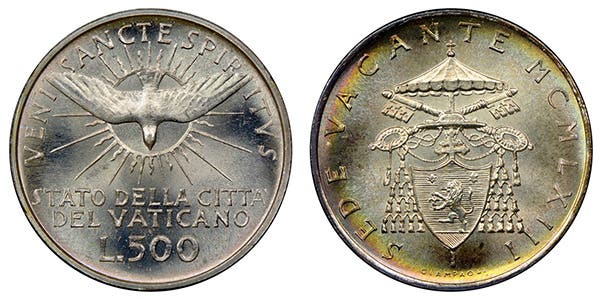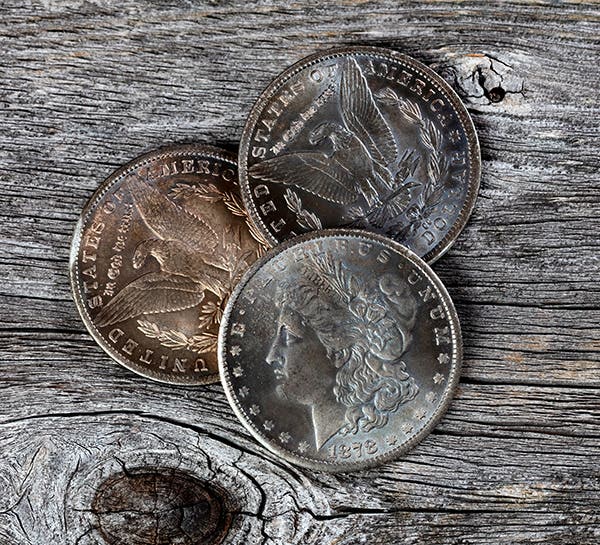Counterfeits get better and better
Counterfeits have been around since the beginning of coinage and I suspect the beginning of other things as well. Today, we have to watch for counterfeit purses, watches, car parts…
Counterfeits have been around since the beginning of coinage and I suspect the beginning of other things as well. Today, we have to watch for counterfeit purses, watches, car parts and blue jeans to name a few. It is human nature to want something for nothing, or to go for an easy profit.
One disturbing thing about fakes and reproductions is that they tend to get better as the counterfeiters learn new methods of production and universal methods of detection. Back in 1972, when I received my initial training, some folks thought we should reveal all we knew about counterfeit coins while others insisted we keep everything secret so as not to help the counterfeiters improve their product. We took the middle ground and revealed just a few of the distinctive defects (“markers”) used to identify a fake.
The group that wished us to keep everything secret turned out to be correct. The more we divulged, the more difficult authentication became as commonly seen defects on virtually all fake coins eventually disappeared. At one Summer Seminar in 1973 or 1974 I showed the class a newly produced $10 Indian and one of the “markers” to use to easily detect it. Within a short period of time, the identical fakes showed up at the authentication service with that defect removed. Unfortunately, when the crooks removed the defect, they left another one in the same place on the die! This specific example is discussed in the American Numismatic Association’s reprint of counterfeit detection columns that appeared in The Numismatist magazine.
Through the years, I’ve witnessed many changes (some subtle and some major improvements) to the quality of counterfeits. Casting techniques improved, die making and strike quality improved, and as far back as the 1980s the basic alloy of the fakes matched that of the genuine except for trace elements that could be detected with sophisticated equipment that was rarely used or required until today. By the 1980s, every way to measure a coin became virtually obsolete. The weight, dimensions and specific gravities of the well-made fakes were within the standards and often tested closer to the standard than the genuine coins.
I don’t mean to alarm readers, but the counterfeiters have taken huge leaps forward in the last several years so that many of the state-of-the-art fakes would fit undetected into a coin collection among the prized pieces. I believe this major jump in quality took place when the excellent copies of U.S. Trade dollars entered the market and were initially detected. The next group of excellent counterfeits that passed scrutiny for a while appeared in the Flowing Hair dollar series. In the last few years, the copper large cents and half cents have been targeted with fakes of exceptional quality.
While the third-party grading services are still one of our best protections against fakes due to their guarantees and the fact that suspicious coins end up there eventually, there is another group of numismatic sleuths making remarkable contributions on the front line. The individuals in the group are Early American Copper members and the “Dark Side” members. Jack Young has been posting information and research on counterfeits from the members in his columns and on Internet forums. The information I pass on here is courtesy of the group and comes from their current research. Their current list (below) shows a group of known dangerous counterfeits, many of which may still reside in collections.
Fortunately, one of the first lessons I learned to detect counterfeits 45 years ago is still applicable today. That’s because modern fakes are struck with counterfeit dies made using genuine coins as a model. Almost any mark on the genuine coin will be transferred to the counterfeit die and appear on every fake coin struck from those dies. The counterfeiters have learned to “distress” their coins further by chemicals, corrosion, slight damage, and added “circulation” marks to camouflage the fakes that look very similar when they are made. Nevertheless, with persistence and two fakes from the same die, most transferred “defects” are detectable.
You and I don’t have the advantage of viewing two coins together. Often the third-party grading service does and today they image coins they have seen before and can check for repeating marks. The Dark Side Group studies the images of coins in online auctions where many fakes are sold. They also look for actual coins offered for sale at shows looking for telltale matches.
One thing they have discovered is the fact that counterfeiters are buying damaged genuine coins at cheap prices and repairing them to use as a model to make their fake dies. Many of these counterfeits have been trading as genuine before being detected. Beware.
If you own any of the coins shown on the list and they were purchased after 2012, I suggest you have them checked for authenticity at one of the four major services.
This article was originally printed in Numismatic News. >> Subscribe today.
If you like what you've read here, we invite you to visit our online bookstore to learn more about Fascinating Facts, Mysteries & Myths About U.S. Coins.
NumismaticNews.net is a participant in the Amazon Services LLC Associates Program, an affiliate advertising program designed to provide a means for sites to earn advertising fees by advertising and linking to Amazon.com and affiliated websites.








